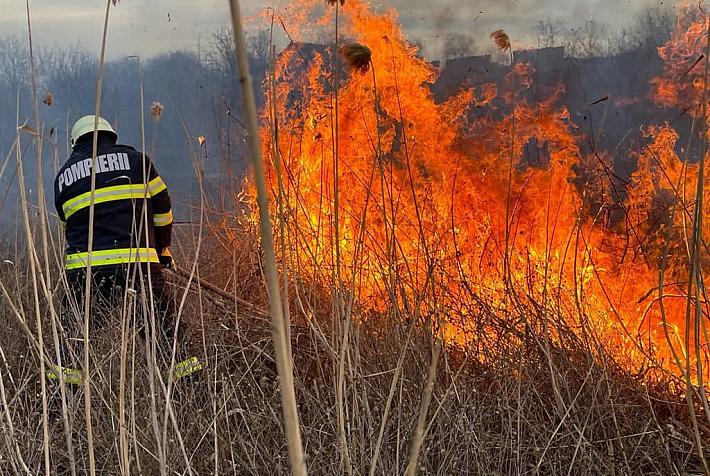Real estate investment - The Impact of the potential S&P Downgrade of Romania to Junk Status in 2025

At the beginning of 2025, Standard & Poor's (S&P) signaled the potential downgrade of Romania's credit rating to junk status, triggering significant repercussions for its real estate market and investment landscape. This potential downgrade could impact investor sentiment and spark a notable shift from institutional to informal investors.
Over the next 18 months, we explore the effects on yield and capital markets. By drawing comparisons with similar downgrades in other Eastern European countries, I analyzed the market trends from Q4 2024 and made predictions for a tumultuous 2025. Preliminary findings suggest potential rental growth amid a backdrop of increasing market liquidity. However, fluctuating investment returns and varying risks require sharp diligence from investors navigating this changing environment.
Market Overview
Historically, Romania's real estate market has attracted foreign and domestic investments due to factors such as robust economic growth, affordable real estate prices, and high rental yields. Despite this, the recent downgrade by S&P has raised significant concerns regarding economic stability, prompting a reevaluation of the investment climate in the region.
The downgrade may lead to a significant decline in foreign direct investment (FDI), particularly from institutional investors who have historically been attracted to Romania's viable real estate market. According to data from Bloomberg, FDI in Romanian real estate fell by 30% in the first half of 2024. In contrast, investment volumes in neighboring Eastern European markets have remained relatively stable, such as Poland and the Czech Republic, which have seen modest gains of 5% and 10% respectively during the same period.
Furthermore, the potential downgrade to junk status may indicate increased risk associated with Romanian government bonds. Yield spreads between Romanian bonds and similar assets from more stable Eastern European nations have noticeably widened. This trend reflects a growing investor aversion, driven by macroeconomic uncertainties including inflation rates (which reached 8% in Romania), unpredictable changes of permitting legislation, currency fluctuations, and political instability.
Historical examples shed light on the potential long-term ramifications of such downgrades. For instance, Hungary's downgrade in 2012 led to a dramatic surge in government bond yields, which skyrocketed to 10%, and a subsequent sharp decline in real estate investment—trends that now mirror those emerging in Romania's market.
According to Reuters, the S&P downgrade has directly impacted access to lower-cost financing for both private developers and commercial entities in Romania. As a result, the cost of borrowing has escalated significantly, constraining development projects and affecting housing supply. This trend is particularly alarming, as projections indicate a potential decline in new housing developments over the next 18 months, with many projects being shelved or delayed due to various cost constraints as well the increased permitting bureaucracy. According to recent data, the volume of new housing projects could decrease between 20% - 25% compared to previous years, reflecting a serious slowdown in the construction sector.
Investor Sentiment
Investor sentiment has shifted dramatically since the downgrade, marked by a noticeable transition from institutional investors—who typically prioritize long-term stability—to more opportunistic, informal investors seeking short-term gains. This shift is revealed in the changing composition of new investors entering the Romanian market, where informal channels have gained traction (particularly the increased participation of private equity firms and crowdfunding platforms in the Romanian market). For instance, a survey indicates that a significant portion (25%) of experts anticipate an uptick in investment activity, recent investments have come from less formal sources.
For instance, according to a report by Preqinopportunistic funds raised $100 billion in the last year, reflecting a 20% increase from the previous year, signifying their growing influence on the market.
This shift towards informal investing raises concerns about market stability. Informal investors often lack the analytical capabilities and long-term commitment associated with institutional funding. Consequently, this could lead to increased market volatility during periods of economic adjustments and uncertainty. In the rental market, growth trends reveal a divergence: while prime locations continue to experience steady demand, areas reliant on speculative investments are facing rising vacancy rates, with some neighborhoods seeing increases of up to 15% in unoccupied units.
In terms of investment returns, understanding yield dynamics is crucial. Rental yields in Bucharest have experienced a slight decline of approximately 2% over the past year, while peripheral regions have encountered a more significant downturn with some areas reporting drops exceeding 5% due to waning investor interest. However, the overall expected rental growth for 2025 indicates a potential stabilization supported by improved market liquidity. Recent data suggests that rental yields in Bucharest have averaged around 5.5%, whereas regions like Ilfov have seen yields drop to approximately 4.0%, highlighting the disparity in performance across locations. These dynamics underscore the importance of strategic investment decisions in the current market landscape. Two recent foreign investors' entries generated 10 M EUR residential projects to be finalized in Q4 2025.
Recommendations
To navigate this challenging investment landscape, real estate investors should consider the following recommendations:
- Focus on Core Assets: Prioritize investments in established locations with stable rental income trajectories to mitigate risk.
- Focus on Green Certified Buildings: Amid the EU continue focus on the Decarbonization as one of the main pillars in the coming new era of the economic focus areas, sustainability continues to be a key element in investment decisions. The investors are perceiving it as a way to secure the long-term profitability. Investors are clearly focusing on certifying their buildings and on getting up-to-date with the EU ESG Taxonomy reporting requirements.
- Diversify Portfolio: Incorporate various asset classes within Eastern Europe to spread risk and capitalize on differing economic recoveries.
- Monitor Government Policies: Staying informed about policy changes and economic reforms is essential, as these factors can significantly influence investor sentiment and overall market stability.
- Consider Joint Ventures: Collaborating with local firms can yield invaluable market insights and facilitate access to informal investment channels. Joint ventures have been shown to boost successful market entries by up to 30%, leveraging local expertise and network connections to navigate regulatory complexities and cultural nuances more effectively.
- Crowdfunding: Real estate market position is similar to the banking industry prior to the emergence of fintech. This gives the boost for the real estate investors to start embracing the crowdfunding scope through tech. The crowdfunding transforms any beginner into a real estate developer eliminating the risks of execution causing money loss. Crowdfunding, which has grown 49X from 2015 to 2023, is becoming a new instrument of investment generating benefits for both investors and developers and in a whole for the real estate market.
Final remark related to the economic reforms: The effectiveness of initiatives aimed at rebuilding market trust is crucial for attracting future investments and fostering economic recovery. As highlighted by the International Monetary Fund, countries that implement robust economic policies including green reforms can experience a 2-3% increase in GDP growth within two years, underscoring the significance of these reforms in shaping investor confidence.
Connect with me: If you consider expanding your business into the Romanian real estate market and cover your business with any potential risks you can check with me what is needed to secure a profitable investment.
Follow me at https://mihaelaoroian.com/ to develop top-performing residential projects and differentiate your asset on the market.
*This is Partner content.












